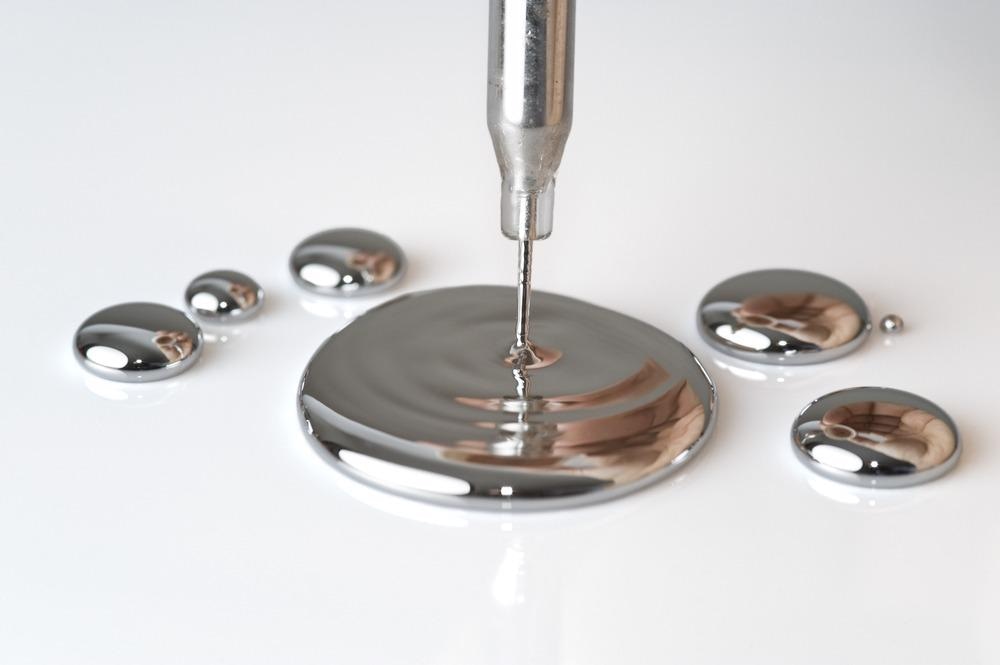Conventional robots are capable of performing specific tasks, but they frequently have problems managing irregular items in unstructured situations. Traditional robots with stiff components or rigid linkages have effectively freed humans from monotonous duties like lifting large objects, assembling, and manufacturing. Research in the journal Accounts of Material stated that there is a new finding in liquid metal transformation machines.

Study: Liquid Metal Transformable Machines.Image Credit: MarcelClemens/Shutterstock.com
Despite fast advances in mechanics, automation, and computer science, performing delicate operations on soft and delicate items, such as picking fruits, lifting eggs, or transporting biological tissues, remains a major barrier for such stiff robots.
Efforts by chemists and material scientists have pushed the field forward for more than ten years to further the creation of soft robots. Soft robots, with their great environmental adaptation and super compliance, show a lot of promise for delicate tasks gripping soft items or transporting vital biological samples.
Discoveries of Soft Robots and Liquid Transformable Machine
More amazing issues can be faced if soft robots are gifted with the unusual capabilities of freely transforming among diverse morphologies and structures, similar to those currently existing in literature and science fiction films.
As one of the most promising robotic soft materials, liquid metals have provided high hopes for creating the transformable robots that might radically alter modern living. Ambient temperature liquid metals, which combine the properties of a fluid and a metal, have demonstrated a number of amazing transformable phenomena, including squeezing through slits and transformation between various morphologies.
Liquid metal transformable machines are predicted to be used in disaster response in unstructured space, army, and aeronautical applications, as vascular robots for medication administration and tumor treatments, and for other complex activities in human-involved situations based on these characteristics.
In reality, transformable robots based on liquid metal and related compositions or blends have spawned a slew of innovative ideas, amazing tactics, and practical applications in various fields of soft robotics. It was found that the large-scaled transformable behaviors of liquid metal could usher in a new era of robots that will change the traditional production of soft robots.
Chemicals Triggered Liquid Metals
Surprisingly, after ingesting a small quantity of aluminum, liquid metal mollusks may become self-fueled and travel over short gaps, paving the path for developing self-fueled soft robots. Starting with the discoveries of liquid metal malleable behaviors and self-fueled liquid metal mollusks and ending with the manufacture and application scenarios of properly functioning hybrid machines.
Chemical energy is a significant energy source, and its potential was shown for use in a soft machine. Researchers accomplished the self-driving movement of the liquid metal sphere, triggered by ions, depending on the chemical energy stored in the composite system formed of the liquid metal and its environmental elements.
Chemical energy, if effectively developed, may aid in the realization of complex liquid metal transformable machine types. It was revealed that the acidity of the surroundings has a substantial impact on the speed of serpentine movement of the liquid metal, with higher acidity typically corresponding to quicker movement speed.
Furthermore, the liquid metal's self-growing serpentine motility was discovered to be triggered by a localized surface pressure differential caused by surface tension imbalances and local curvature.
The morphing conductors that are sensitive to the magnetic field as an on-and-off switch for magnetization controlled circuitry can be proposed using the magnetic liquid metal's significant electric conductivity. The liquid metal may flow and convert against gravity to create closed circuits underneath the influence of a magnetic field.
Liquid metal brings soft robotics a step closer
Previous Research on Liquid Metal For Robotics. Video Credit: Study Guides/Youtube.com
Due to the electromagnetic particles aggregated and the transportation of the liquid metal to join the damage gap, electronic devices built of magnetic liquid metal can accomplish electrical restoration (self-repairing) via the magnetic field.
It has been discovered that the liquid metal inspires transformational behaviors across various morphologies, which dispels certain reservations that the liquid metal is growing toward advanced transformable devices. However, if relying on the external field, realizing the equivalent of biological change based on liquid metal remains a tough issue.
Fortunately, ambient temperature liquid metal droplets of a millimeter or centimeter size have been discovered to be self-propelled without the use of external power sources. Its shape may change in reaction to the shifting diameter of such pipes at bends, making it a good choice for self-powered transformable robots design.
References:
Wang, H., et al. (2021). Liquid Metal Transformable Machines. Journal Accounts of Material Research. Publication Date: October 30, 2021. https://pubs.acs.org/doi/10.1021/accountsmr.1c00182
Disclaimer: The views expressed here are those of the author expressed in their private capacity and do not necessarily represent the views of AZoM.com Limited T/A AZoNetwork the owner and operator of this website. This disclaimer forms part of the Terms and conditions of use of this website.